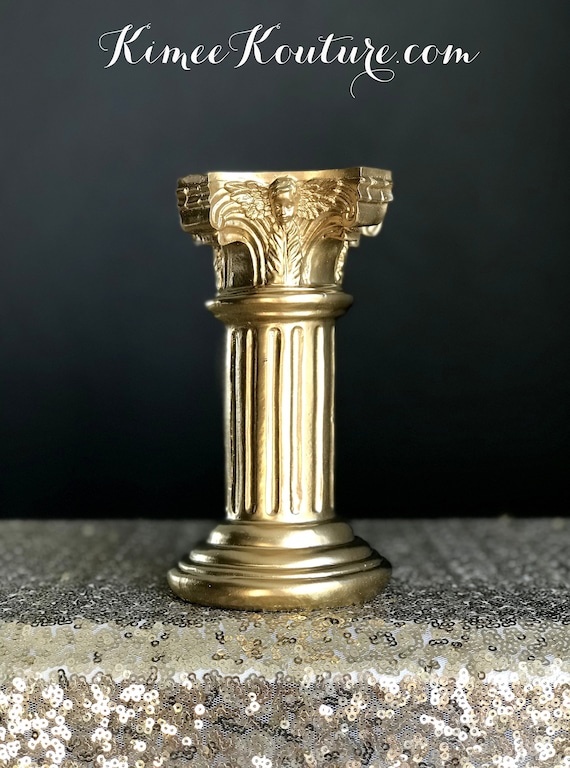When it comes to interior design, incorporating elements that resonate with timeless elegance can transform any space. One such classic element is the Greek column, a symbol of ancient architectural brilliance that continues to find its place in modern decor. In this article, we’ll dive deep into the world of Greek column decor, exploring its history, styles, applications, and how you can seamlessly integrate it into your own space. With over 2700 words packed with valuable insights and personal experiences, we aim to inspire you to elevate your decor with this iconic motif.
The Allure of Greek Columns
Greek columns have long captivated architects, artists, and homeowners alike. Their aesthetic appeal and sturdy structure are just the tip of the iceberg. Let’s explore their rich history and significance in classical architecture.
A Brief History of Greek Columns
Greek columns emerged around the 6th century BC as a fundamental element of ancient Greek architecture, serving both structural and decorative purposes. The three primary styles are:

- Doric: Characterized by its sturdy and simplistic design, Doric columns are devoid of any elaborate decorations.
- Ionic: Recognizable by its scroll-shaped capitals, Ionic columns represent a more decorative style.
- Corinthian: The most ornate of the three, Corinthian columns feature elaborate leaf decorations and are often used to convey grandeur.
These styles not only reflect the aesthetics of their time but also embody the values of strength, beauty, and harmony cherished in Greek culture.

Incorporating Greek Columns in Modern Decor
Whether you are looking to add a classical touch to your home or office, Greek column decor can be an excellent choice. Here are various ways to incorporate them into your decor.

1. Column-Based Furniture
Using furniture inspired by Greek columns can bring a hint of classical elegance to your space. For instance, column-style tables, chairs, or shelving units can serve as focal points.

Pros and Cons of Column-Based Furniture
| Pros | Cons |
|---|---|
| Timeless aesthetic appeal | May require more space |
| Sturdy and durable materials | Can be heavy and difficult to move |
| Versatile design options | Potentially higher cost |

2. Decorative Columns in Architecture
For homeowners looking to make a bold statement, incorporating Greek-style columns into the architecture of your home can add grandeur. They can be installed at entrances, patios, or even in the interior to create a palatial feel.

Choosing the Right Material
When considering Greek columns for architectural purposes, the choice of material is crucial. Common materials include:
- Marble: The traditional choice, marble columns exude luxury but can be expensive.
- Fiberglass: Lightweight and affordable, fiberglass columns can mimic the look of stone.
- Wood: Offers warmth and can be intricately carved but may require more maintenance.
DIY Greek Column Decor Projects
If you’re feeling crafty, there are several DIY projects you can undertake to incorporate Greek column decor without breaking the bank. Here are a couple of ideas:
1. Faux Columns
Creating faux columns using cardboard tubes and paint can be an easy weekend project. Here’s how:
- Acquire sturdy cardboard tubes (like those used for construction).
- Cut to desired height and wrap with paintable wallpaper or textured paint.
- Add a capital using a small round table base or a wooden circular piece.
- Finish with gold or bronze paint for an authentic look.
2. Column Planters
Turn small Greek-style columns into stylish planters for your outdoor space. Simply:
- Choose small, column-shaped pots or create your own using concrete.
- Fill with soil and plant your favorite flowers or herbs.
- Arrange in clusters on your patio or in the garden.
Key Considerations When Using Greek Column Decor
Before you incorporate Greek columns into your decor, here are some key points to consider:
1. Space
Assess your space to ensure that the addition of Greek columns will enhance rather than overwhelm. Remember that less can be more, especially in smaller areas.
2. Cohesion with Existing Decor
Ensure that your Greek column decor harmonizes with your overall design theme. Consider color palettes, materials, and existing furnishings.
3. Budget
While Greek columns can elevate your decor, they can also be costly. Set a budget and explore different material options to find a balance between quality and affordability.
FAQs about Greek Column Decor
1. What types of Greek columns are most commonly used in decor?
The most common types are Doric, Ionic, and Corinthian, each with its unique characteristics that contribute differently to decor aesthetics.
2. How can I incorporate Greek column decor in small spaces?
Consider using smaller-scale column-based furniture or decorative faux columns to enhance vertical space without crowding the area.
3. Are Greek columns suitable for outdoor decor?
Absolutely! Greek columns can be used outdoors for entryways, patios, or as part of garden design. Just ensure they are made of materials that can withstand weather conditions.
4. Can I DIY Greek column decor?
Yes, many DIY projects can bring the elegance of Greek columns into your home, such as faux columns or column-style planters, which can be both fun and rewarding.
5. What colors work best with Greek column decor?
Neutral colors like white, cream, or soft pastels often complement Greek columns beautifully, but feel free to mix in bolder colors to create contrast and vibrancy in your space.
Conclusion: Embrace the Timeless Elegance of Greek Column Decor
Incorporating Greek column decor into your home is a fantastic way to add sophistication and a touch of history to your design. From furniture to architectural elements and DIY projects, the possibilities are endless. With the right planning and creativity, you can create a space that reflects your personality while paying homage to the classic beauty of Greek architecture. So, go ahead and explore the world of Greek column decor—you might just find it becomes the centerpiece of your home!